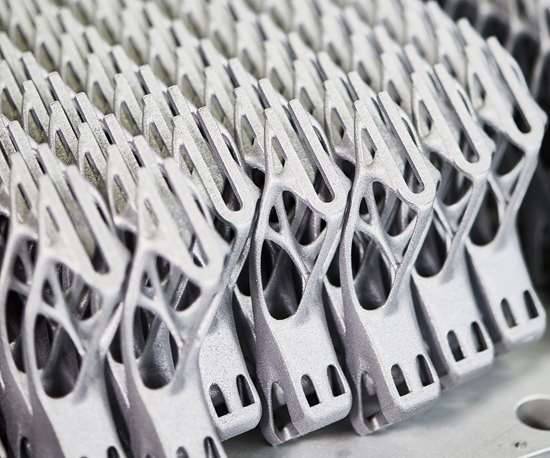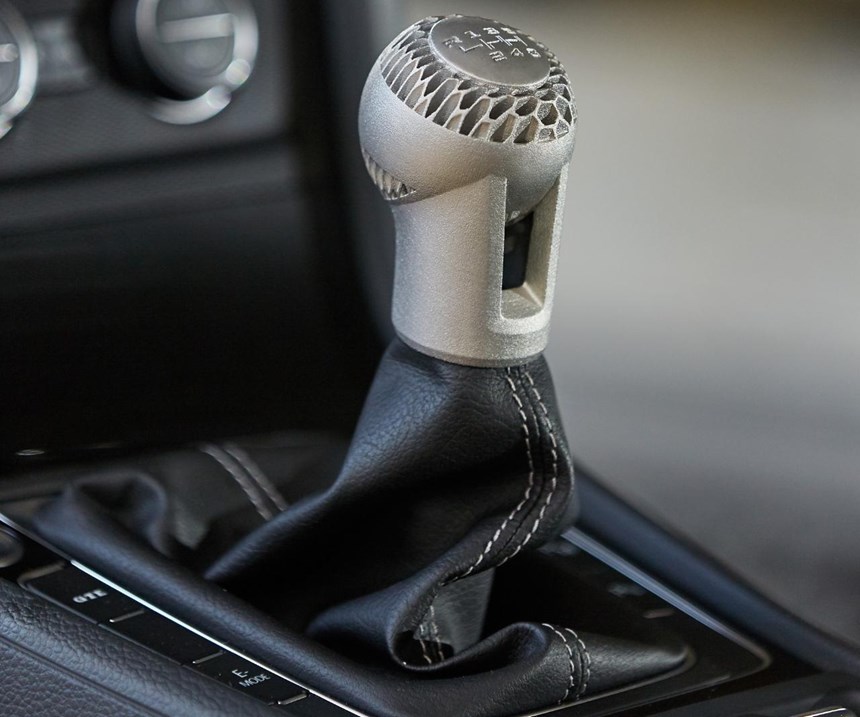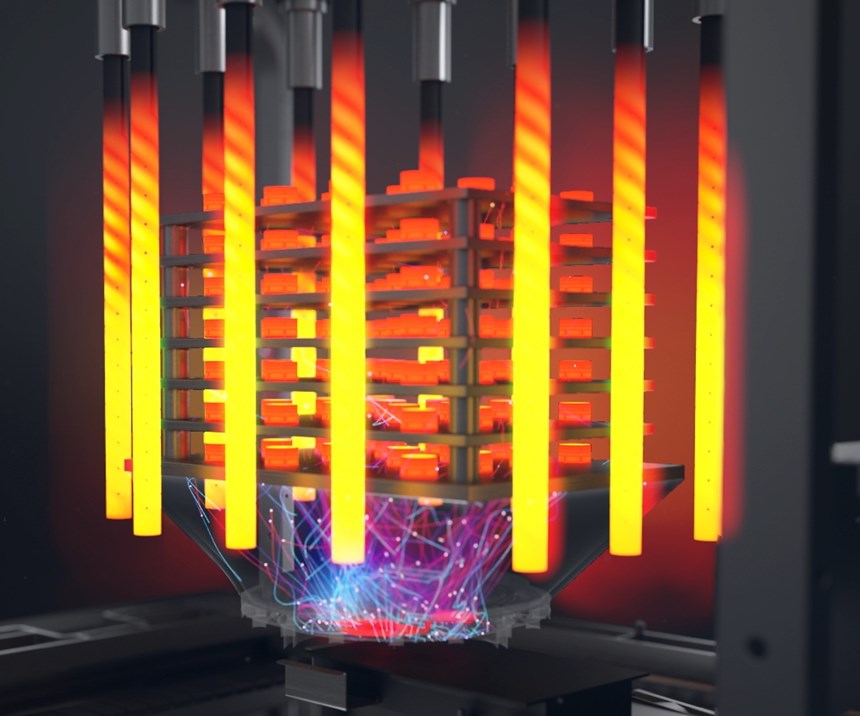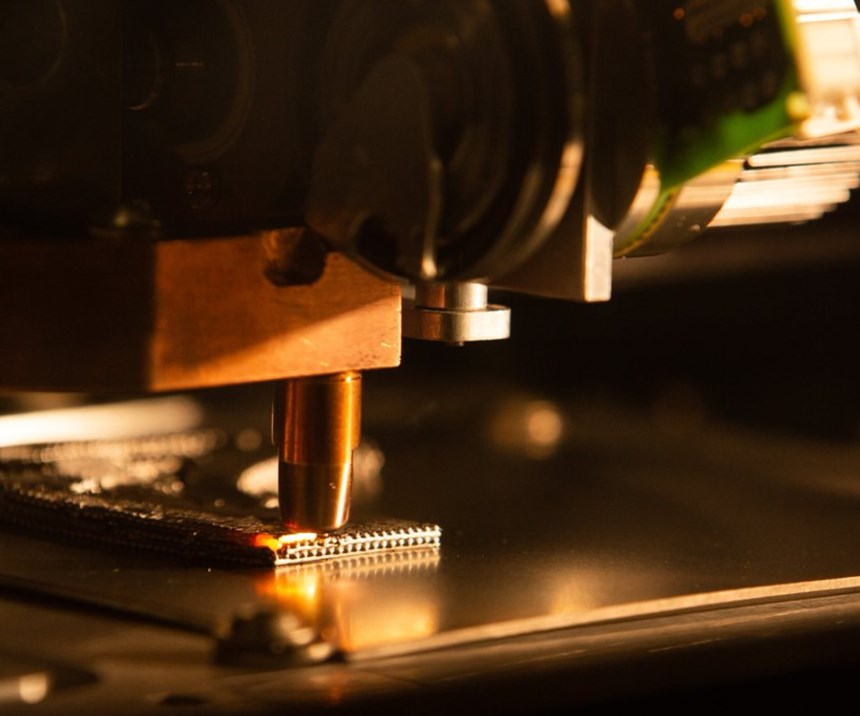Speed Metal
The grail of metal additive manufacturing is the ability to keep pace with full automotive production. The quest continues.
The most common method of printing metal parts is laser sintering—that is, using a laser beam to sinter metal powder, layer by layer, to build up a 3D part. That part may have design features impossible to make using subtractive methods—but the process is nonetheless achingly slow compared to the speeds allowed on a mill or lathe. Even though 3D printing of metal can open the door to simpler, more flexible and less wasteful production processes and make components as high in quality as any made by metal cutting technologies, it’s still just too slow to replace those methods in high-volume production settings.
So the industry is trying hard to speed up the process. A number of approaches are being tried.
Smarter Manufacturing
Because AM has only recently emerged from prototype and low-volume production, there are efforts underway to improve the total process to increase output. For example, a project in Germany, IDAM (Industrialization and Digitization of Additive Manufacturing for Automotive Series Processes) has been established by BMW, the Fraunhofer Institute for Laser Technology ILT (ilt.fraunhofer.de), GKN Powder Metallurgy (gknpm.com), and others, with the objective of minimizing the amount of manual work related to making parts with additive. They estimate that 35% of the processes in a metal additive production cell rely on direct human labor. The partnership believes that speed and efficiency can be improved by using automation to reduce that human-involvement amount to about 5%. As a result, they estimate unit costs of printed metal components can be cut in half.
In the aerospace industry, Daimler, aircraft structures supplier Premium Aerotec, and additive manufacturing equipment producer EOS (eos.info) have established “NextGen AM.” Its goal is to speed the process of printing aluminum parts. Like IDAM, the strategy hinges on leveraging the benefits of automation: These collaborators reckon that the operations surrounding the printing process represent 70% of the total manufacturing cost of printed parts, making those operations a worthy target for improvement. Yet a large part of its work—as well as others in the AM space—is dedicated to improving the additive equipment or how the process is performed.
Printing Faster
NextGen AM is developing its automation around an EOS M 400-4 laser sintering system. Companies such as EOS and SLM Solutions NA (slm-solutions.us) have greatly improved the production output of its selective laser sintering machines by using the expedient of adding more lasers to the machine.
Using more than one laser to work the powder bed at the same time greatly increases the number of parts made per day without altering the sintering process itself. The EOS M 400-4 and the SLM 500, for example, each use four lasers—the result of which is production throughput over three times what it would be under their respective single-laser systems.
Others are not adding but removing lasers completely. The Metal Jet system introduced by HP in August 2018 has a bed of powdered metal similar to those used in laser sintering systems, but instead of lasing it, a 12.6-inch wide bar with an array of print heads, each with thousands of nozzles, applies microscopic droplets of a proprietary binding agent to succeeding layers of powder. After excess binding liquid is evaporated with heat, the “green” part is decaked and then sintered in a furnace. The company says that the process is up to 50 times faster than laser sintering.
HP’s Metal Jet was preceded by the Production machine from Desktop Metal (desktopmetal.com) which uses a similar inkjet approach. The system uses two print bars to spread both powder and binder in a single pass across the build area at a rate of 3 billion drops per second. The Production model has printing speeds of more than 732 cubic inches per hour. The green part is sintered in a furnace heated by a multidirectional microwave antenna. CEO and co-founder Ric Fulop claims the system is a hundred times faster than laser-based sintering systems.
Wired for Speed
Digital Alloys Inc. (digitalalloys.com) foregoes the use of pricey metal powder altogether. The company’s Joule Printing process begins with relatively inexpensive wire. A wire feed system positions the tip of the wire at the desired location, then pushes current through the wire and part and into the print bed. (“The current melts the wire tip using joule heating—resistance heating—the same physics that heat a coil in a toaster,” says CEO Duncan McCallum.) Melting and wire feed continue while the print head moves, laying down beads of metal which are fused together to form fully dense metal parts.
“A key is that positioning and melting of the wire occur simultaneously in a single step, McCallum notes. “This radical simplicity lowers cost, saves time, and increases repeatability.”
With resistance heating, there is no wait for heat to move to where it’s needed. Melting occurs instantly, exactly at the desired location. The system leverages this to print at 11 to 22 lb/hour at very low power. While that’s a slower print rate than binder jet, this system doesn’t require post-printing sintering.
When the automation-focused, smart manufacturing-enabled approaches being developed by the likes of IDAM are inevitably combined with one of these faster printing technologies, we could well see a groundswell of additive use in the industry. The days of high-volume metal additive production seem to be inching closer.
RELATED CONTENT
-
Additive @ Ford
Here’s a look at how additive technology is being thought of—and used— at Ford.
-
on lots of electric trucks. . .Grand Highlander. . .atomically analyzing additive. . .geometric designs. . .Dodge Hornet. . .
EVs slowdown. . .Ram’s latest in electricity. . .the Grand Highlander is. . .additive at the atomic level. . .advanced—and retro—designs. . .the Dodge Hornet. . .Rimac in reverse. . .
-
Ford Advancing Manufacturing
To assure that the company maintains its capabilities, relevance and leading-edge know-how in manufacturing, Ford has spent $45-million on its Advanced Manufacturing Center in Redford Township, Michigan, just west of Detroit.












